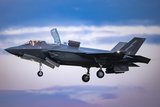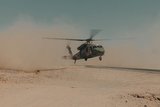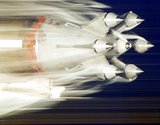AeroVironment unveils Puma VTOL kit for small UAS
AeroVironment’s Puma VTOL kit enables rooftop launch and landing. (Photo: AeroVironment)
AeroVironment has announced the release of its Puma vertical take-off and landing (VTOL) kit, which can be integrated into Puma 2 AE and Puma 3 AE small UAS (SUAS) for vertical take-off and landing.
With the optional VTOL kit, the Puma system can operate in various terrains without needing a runway or large open space for launch and recovery.
The VTOL capability is operated through AeroVironment's Crysalis ground control solution, streamlining operations with features such as one-button launch and recovery and enabling a single operator to execute missions.
The Puma VTOL kit allows operators to quickly transition between fixed-wing and VTOL platforms to adapt to varying mission needs.
Integration of the kit requires minimal one-time modifications to the aircraft's airframe, AeroVironment said.
'Our new Puma VTOL kit provides the operator with a wider range of launch and land capabilities, enhancing the unit's mission while further safeguarding its personnel during these periods of transitional flight,' said Shane Hastings, AeroVironment's VP and product line GM for SUAS.
Once modified, the plug-and-play Puma VTOL kit can be easily added or removed in the field within a few minutes, allowing operators to transition between a fixed-wing and VTOL platform quickly.
Related Equipment in Defence Insight
More from Air Warfare
-
![Lockheed plans further solid rocket motor investment in Europe and Middle East]()
Lockheed plans further solid rocket motor investment in Europe and Middle East
The company has worked to heavily invest in its solid rocket motor production capabilities, both in the US and internationally, to build a strong supply chain to meet growing demand.
-
![Boeing to build Apache AH-64E attack helicopters for Poland, Egypt and Kuwait]()
Boeing to build Apache AH-64E attack helicopters for Poland, Egypt and Kuwait
The $4.7 billion international order for the three countries will see production conclude around May 2032.
-
![How the US Air Force plans to use data analytics to enhance the roles of airmen and assets]()
How the US Air Force plans to use data analytics to enhance the roles of airmen and assets
The USAF has allocated nearly US$500 million to further the deployment of this type of technology in FY2026. It envisions using analytics to enhance sensors, weapons, missiles and human performance.





















